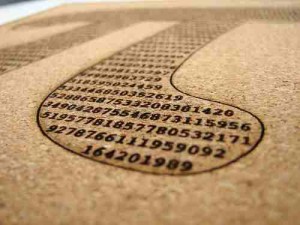May 5th – 11th
5 hours – reading Number Sense by Stanislaus Dehaene, Dali by Robert Descharnes
3 hours – video; The Dali Dimension by Joan Ubeda et. al, and Zero to Infinity: A History of Numbers by Edward B. Burger
1 hour – listening to Radiolab episode Numbers
4 hours – Calculated Poetics
3 hours – writing and revising term paper
This week got into some beefy stuff of the origins of mathematics and art produced out of exploration into the frontiers of mathematics today. I began the week by watching The Dali Dimension: Decoding the Mind of a Genius about Salvador Dali and the vast depth of knowledge he kept current with throughout his life about the great scientific discoveries of his time. He attempted to represent abstract ideas like Einstein’s theory of relativity and ideas from quantum physics as well as biological ideas like the discovery of the double helix as the structure of DNA. This continued late into his life with his last painting The Swallowtail which was inspired by the equations of catastrophe theory. Earlier in his work, he depicted 4th dimensional objects 2 dimensionally on canvas, relating the transcendental nature of these concepts to a spiritual or religious experience. His techniques and interest in fusing art and science to visualize concepts will serve as a main example of tapping into our instinctual math abilities as well as aiding in learning the typical concepts of our math curriculum. This may relate to the Waldorf philosophy and curriculum of math as well.
While in the school library searching for The Dali Dimension, I stumbled across a DVD lecture series called Zero to Infinity by Edward B. Burger, a professor and mathmetician from Williams College. The lectures are pleasant and delightful. Edward B. Burger makes the concepts easy to follow and his passion radiates through the screen. In it, he covers how the concept of number differs from that of numbers, explaining the numbers are to number as humans are to humanity. In the introduction, he explains how hard it is to actually define number and that no consensus of a definition exists. Numbers are abstract as they are concrete. He then begins explaining the history of numbers, and how concepts and counting systems evolved and led to great philosophical changes in people’s relation to the universe. It is a great, comprehensive suppliment to Number Sense and provides many concrete examples of alternative and historical number and math systems. His explanation of the Babylonian counting system fit perfectly with my story of passionately learning it in my 4th grade class from a wonderful teacher.
I also scheduled a sit in and interview with Tim Morrissey and his 4th grade class at Olympia Waldorf School this next Friday. I’ve also begun an interview by email with Anita Lengus, faculty member here at TESC, about the history of math education in the United States. She’s been quite willing and helpful despite a busy schedule, as has Tim.

